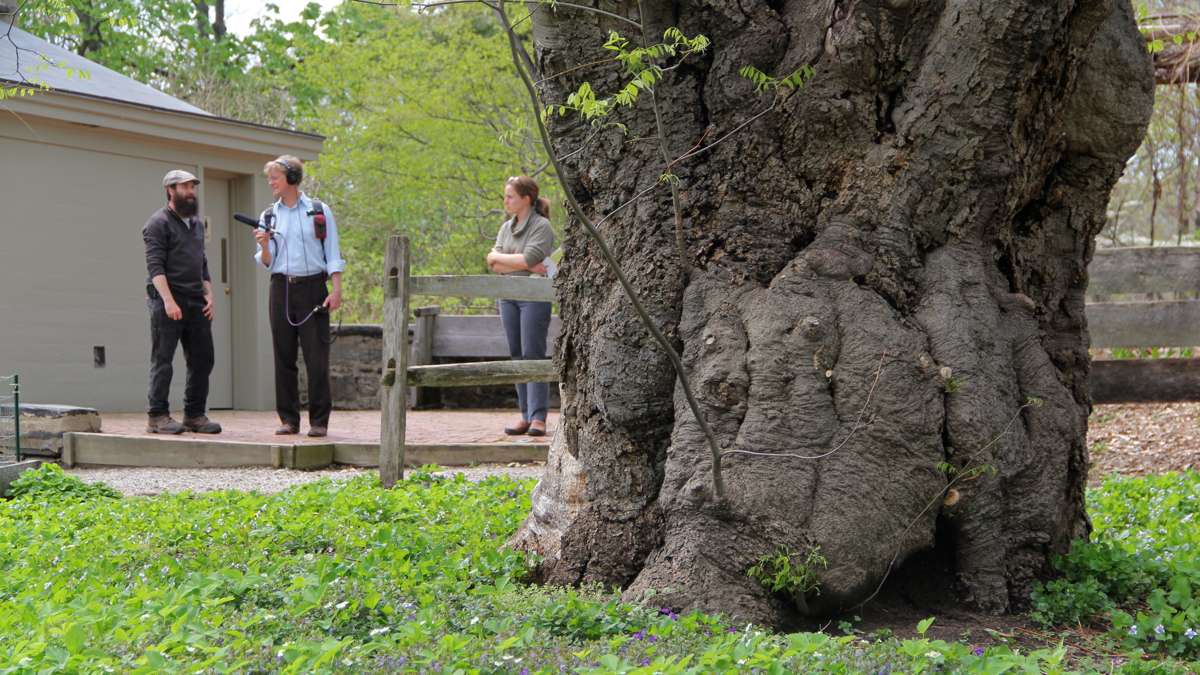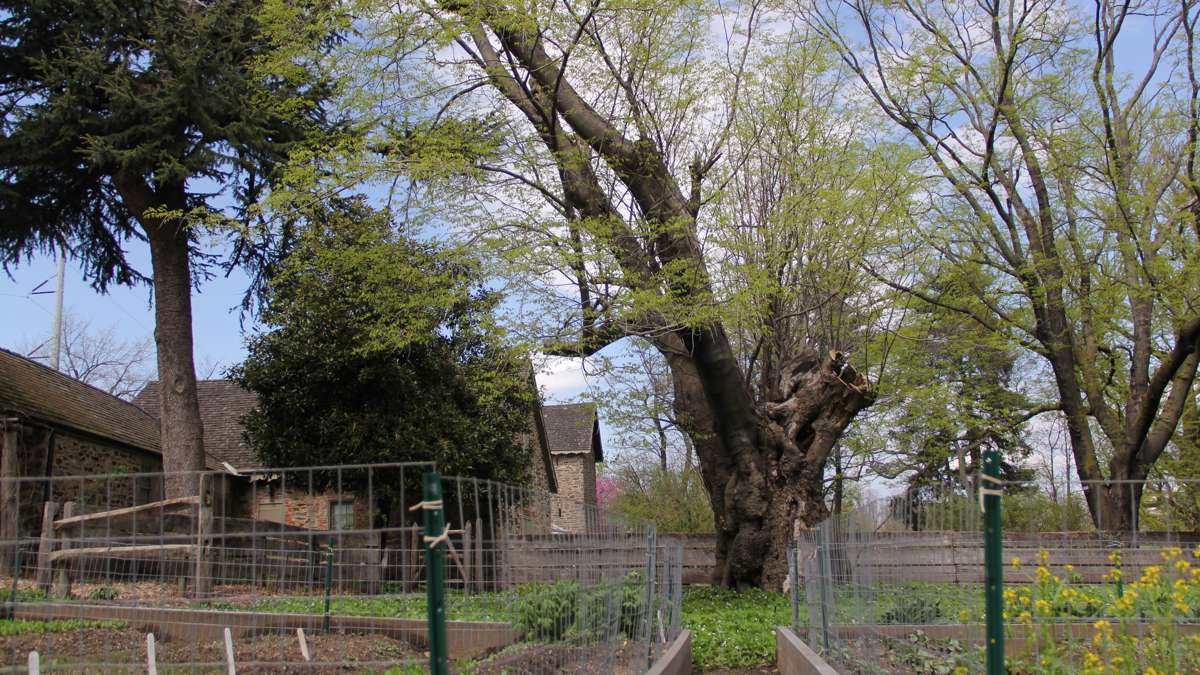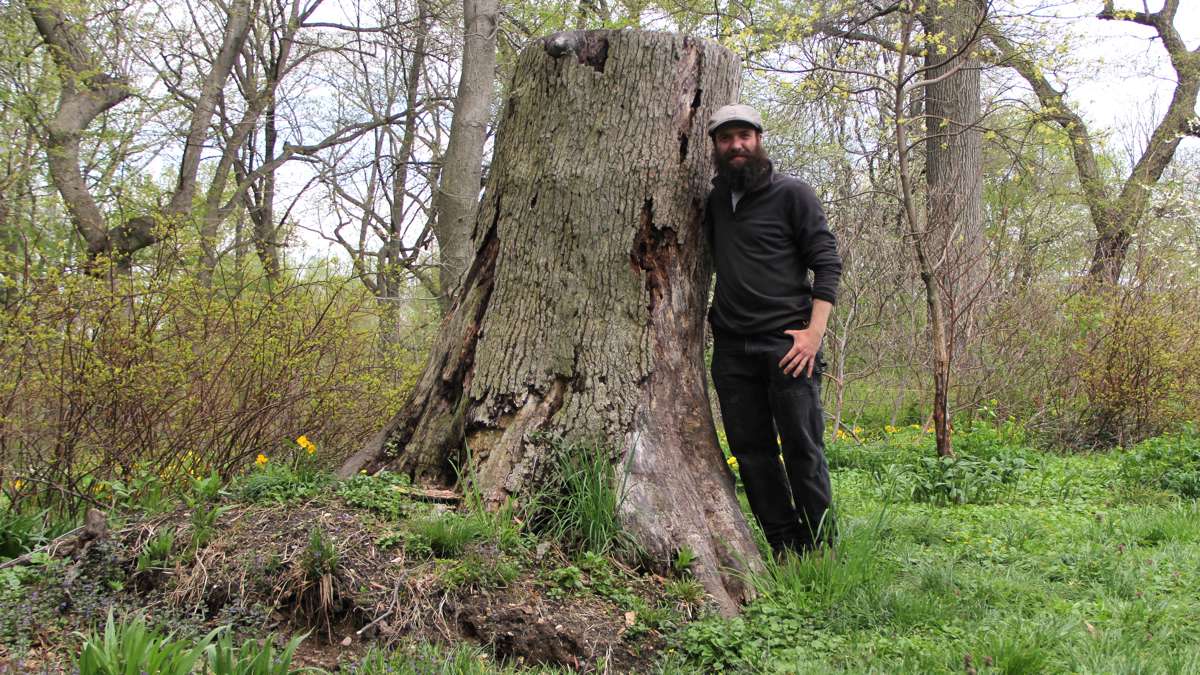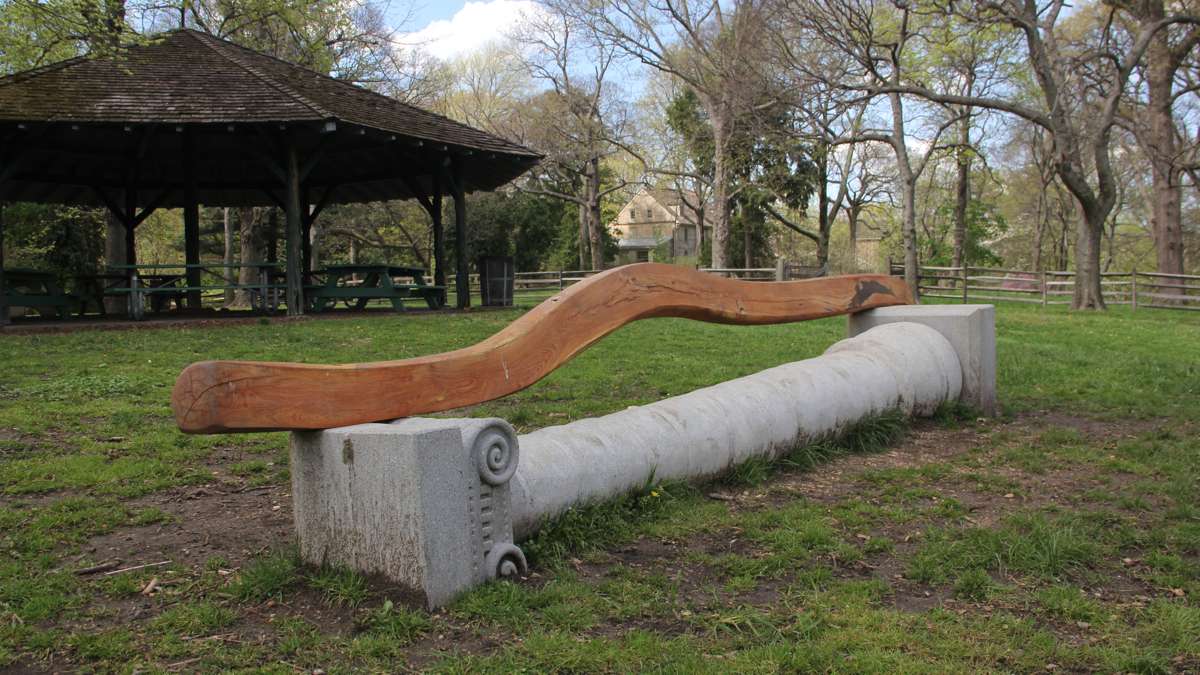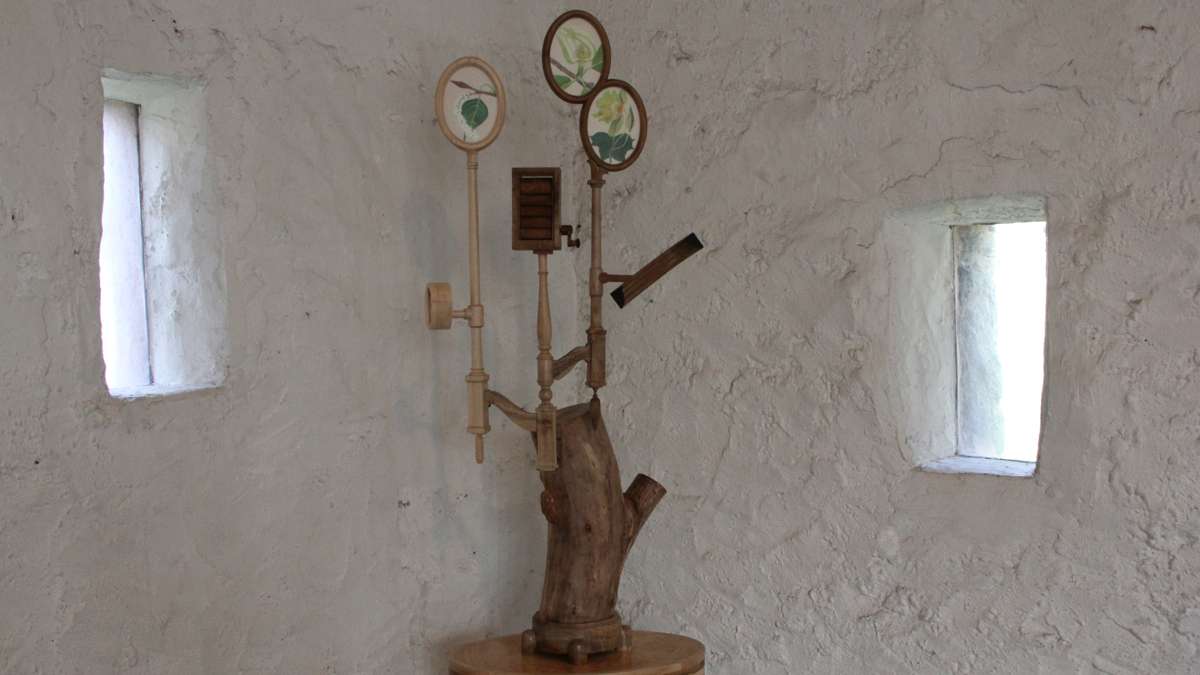Wood artists salvage beauty from destruction at Bartram’s Garden
In the wake of a historic deluge of rain this week, an Old City gallery is remembering another storm from four years ago.
In the wake of a historic deluge of rain this week, an Old City gallery is remembering another storm from four years ago, which toppled dozens of historic trees in Bartram’s Garden, America’s oldest botanical garden in Southwest Philadelphia.
In June 2010 a freakishly powerful windstorm swept through the garden, lasting just twenty minutes but damaging or destroying 65 trees. Some had been standing for more than 200 years.
“This is the stump to a large, 40 to 50 foot cucumber magnolia that had toppled completely,” said the head gardner at Bartram’s Garden, Todd Greenberg, while patting the six-foot stump, about 36 inches around, at the southern edge of the historic garden. When he started chainsawing the fallen trunk for removal — about 700 board-feet — woodworkers came well, out of the woodwork.
“They were excited to salvage wood from the cucumber magnolia,” said Greenberg. “It’s a softer grain, a lighter color. It’s ideal for woodworking.”
It’s an ill wind that blows nobody any good: The Center for Art in Wood is now exhibiting wooden sculptures that grew out of the destruction.
The fine-art gallery in Old City approached Bartram’s Garden to contribute material to a juried submission process. Forty artists made 36 wooden sculptures inspired by John Bartram, the 18th-century botanist who created Batram’s Garden.
The show, “Batram’s Boxes Remix,” started as poetic interpretations of the boxes which Bartram made to ship seeds and seedlings around the world. Woodtunring artist Dewey Garret made seed boxes out from intricately carved boxwood salvaged from the garden. The Japanese artist Satoshi Fujinuma made a tower of flat boxes, like stacked bento boxes, containing imaginative, fictional seed pods hand-carved by the artist.
Local artist Zachary Webber and Benjamin Neiditz made a box of animatronic plants. Wrenching the electronic mechanisms from inside toys such as a singing mounted fish and a dancing Homer Simpson, the West Philadelphia duo built a box full of carnivorous plants, a la Venus Flytrap, called “Aphrodite’s Mousetrap.”
“There are motion sensors hidden in the room,” said Webber about the piece, one of two installed inside Bartram’s Garden historic barn. “When you enter the room, there’s a delay. When you get close to the box these monsters wriggle around, and hopefully surprise people.”
Most of the artists went far outside the box. Leah Woods made a wall sculpture of butternut and cherry wood carved into interlocking petals that trace John Bartram’s influence across the eastern United States and Europe.
John Bartram worked locally in Southwest Philadelphia, but corresponded globally, sending and receiving plant samples from around the world. Several artists chose to collaborate together, mimicking Bartram’s relationship with a global network of botany enthusiasts. Dixie Biggs and Ray Jones collaborated on a luxuriously carved seed box of boxwood and cherry, with tromp l’oeil carvings of seed pods inside.
“John collaborated with people in Europe in sharing these seeds,” said Albert LeCoff, executive director of the Center for Art in Wood. “So, these artist shared ideas to create these objects, which they could not have done themselves.”
Not all of the objects on display used wood salvaged from Batram’s Garden, but rather took inspiration from Batram’s life and work.
All of the wood from the fallen historic trees has been distributed to woodworkers, or used for on-site building projects. Some of that wood has come back to the garden as art objects for auction, or furniture. Some of the cucumber magnolia tree was used as graft cuttings to regenerate itself. Greenberg says there are four or five saplings at nearby Morris Arboretum that maintain the grand tree’s original DNA.
“When something falls down there are many opportunists,” said Greenberg, looking at new foliage taking room inside the magnolia tree stump. “In a garden like this we are the opportunists — we take advantage of newly opened up areas of the landscape to replant and grow something different.”
—
“Bartram’s Boxes Remix” is on display at the Center for Art in Wood (141 N 3rd St, Philadelphia) from May 2 – July 19, with a few additional pieces at Batram’s Garden.
WHYY is your source for fact-based, in-depth journalism and information. As a nonprofit organization, we rely on financial support from readers like you. Please give today.



